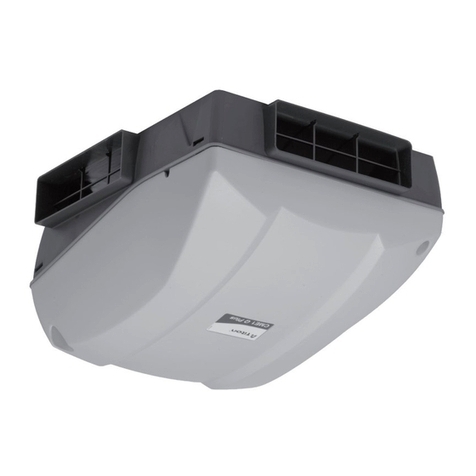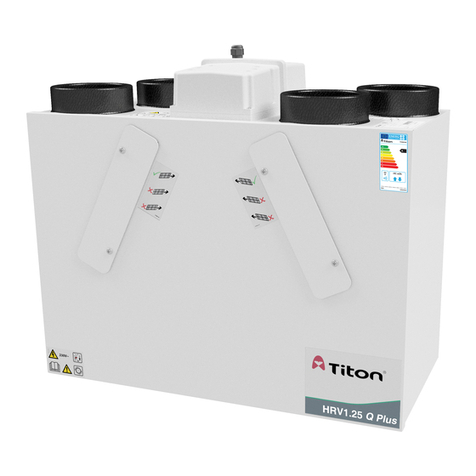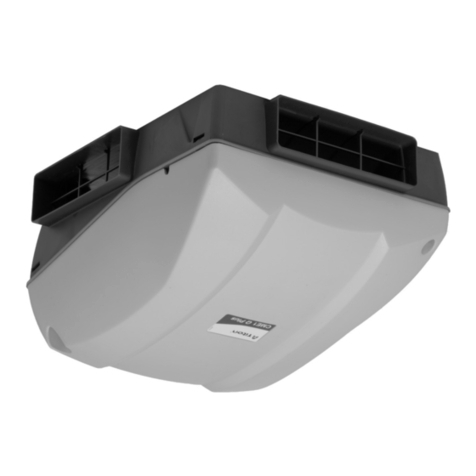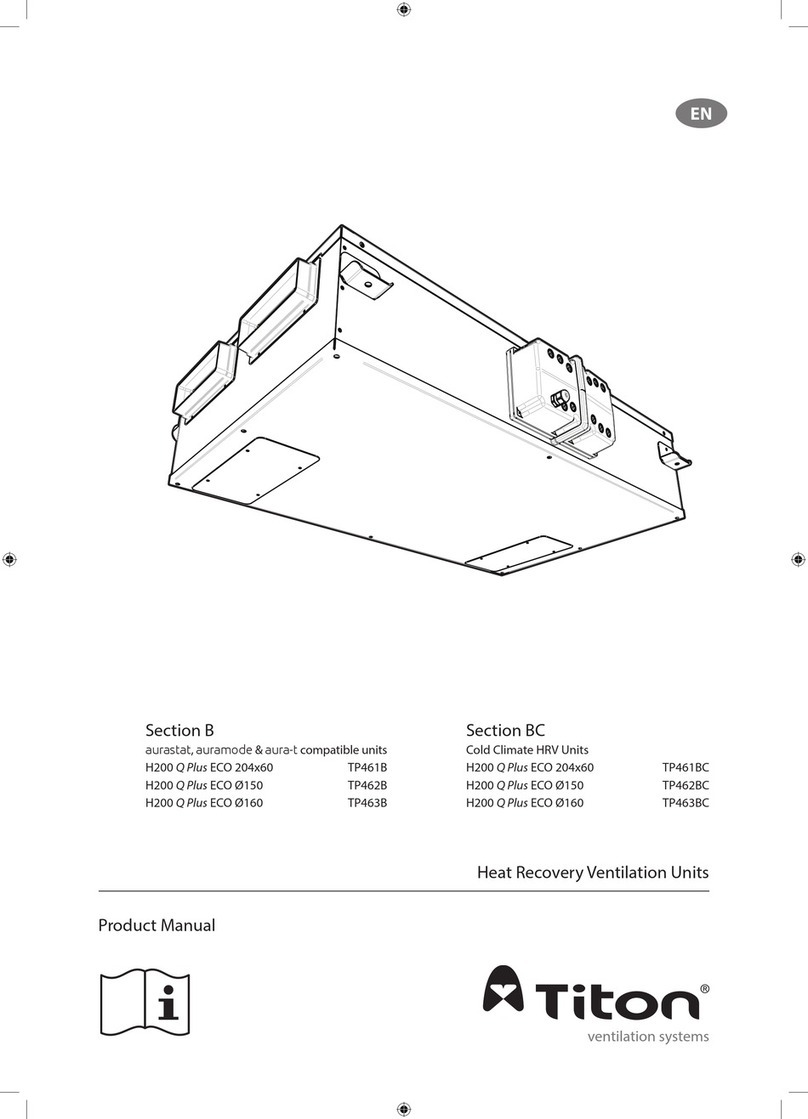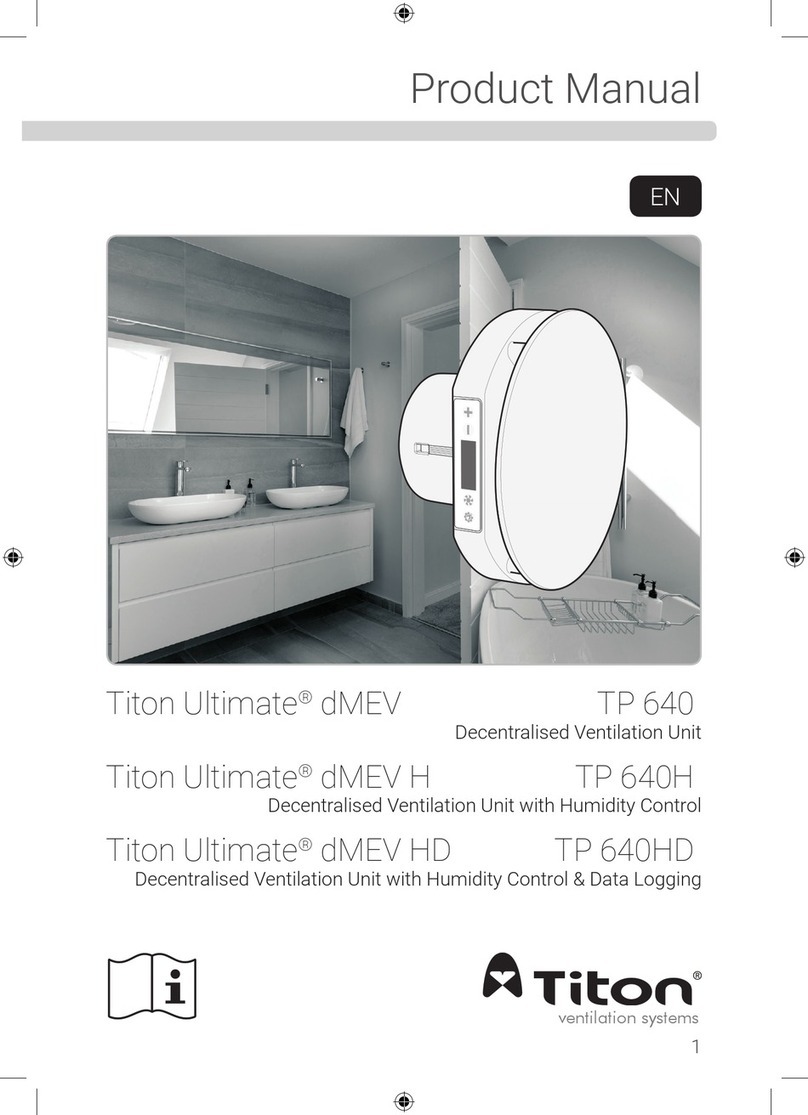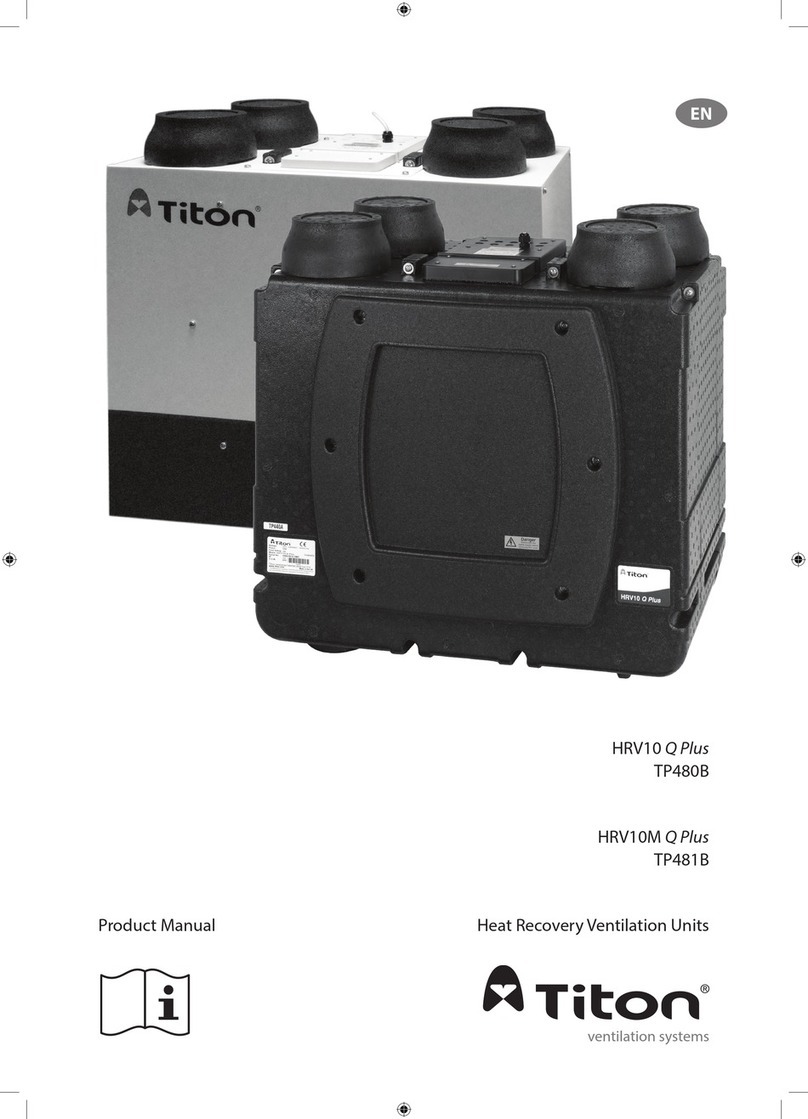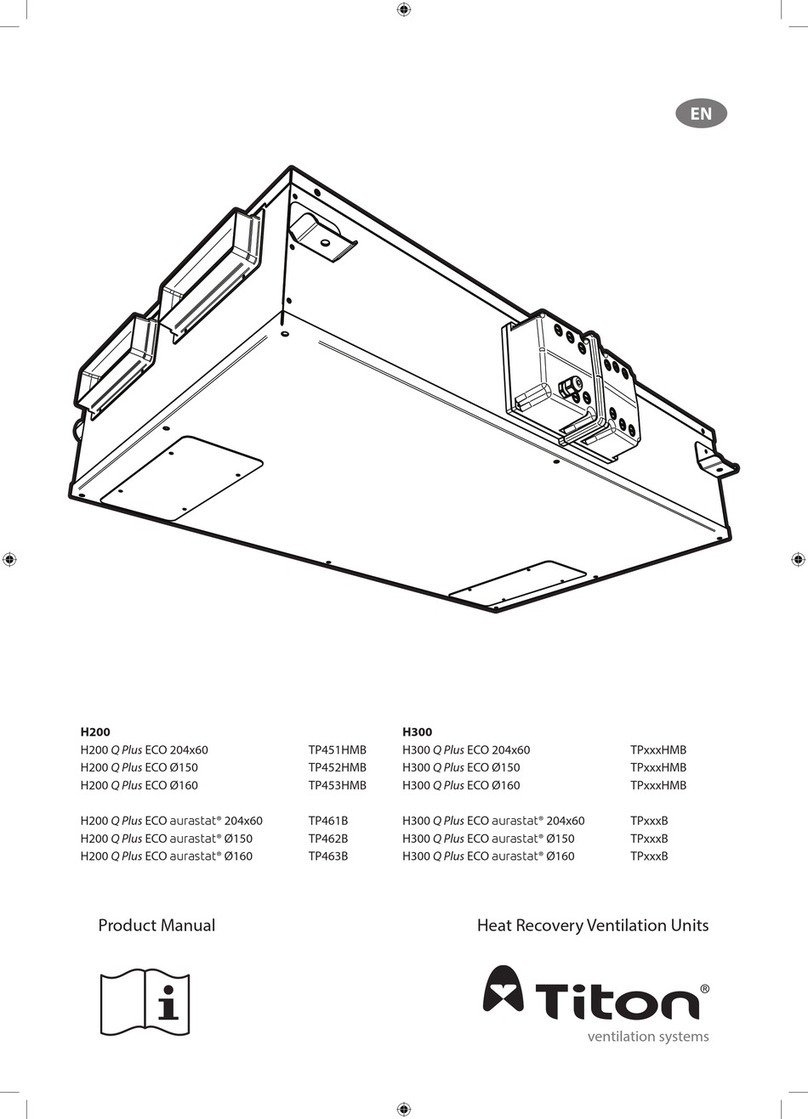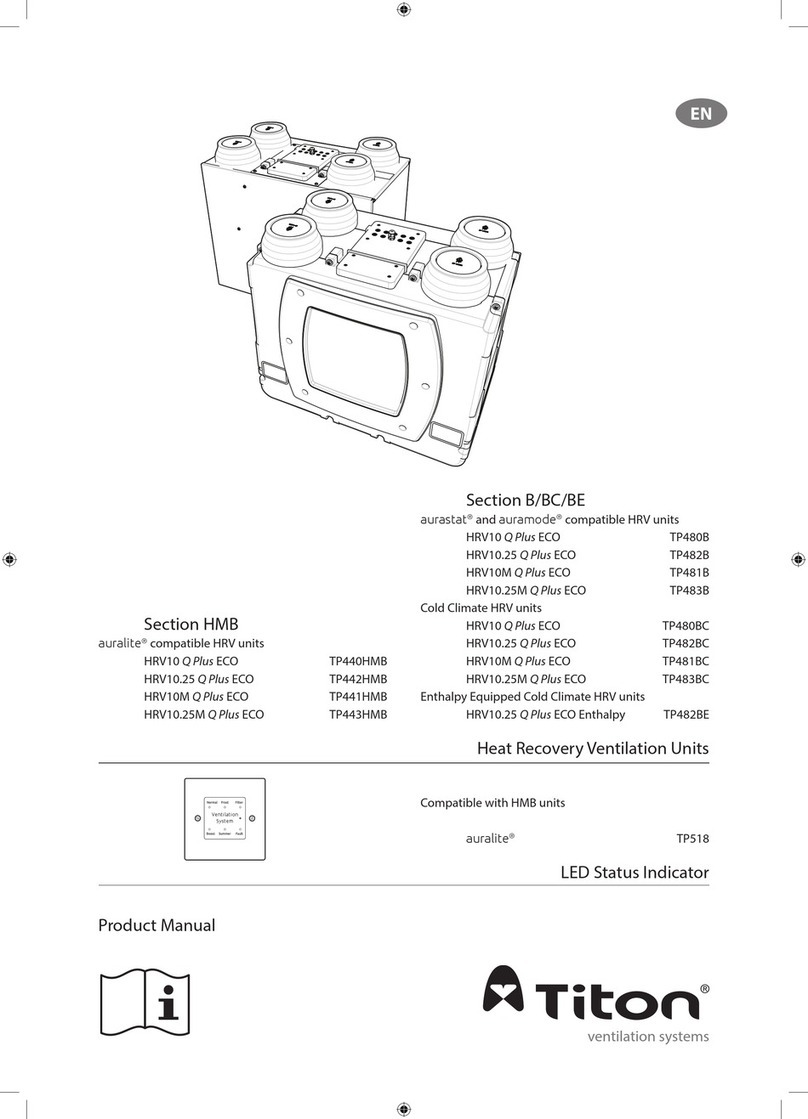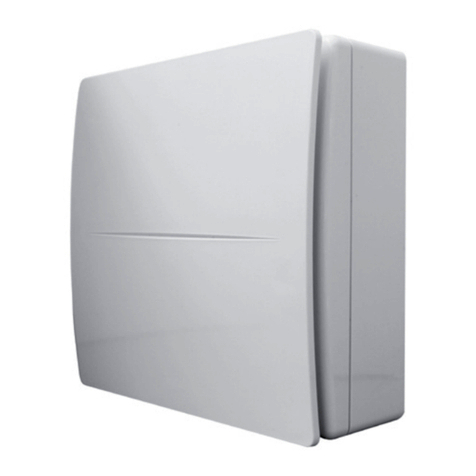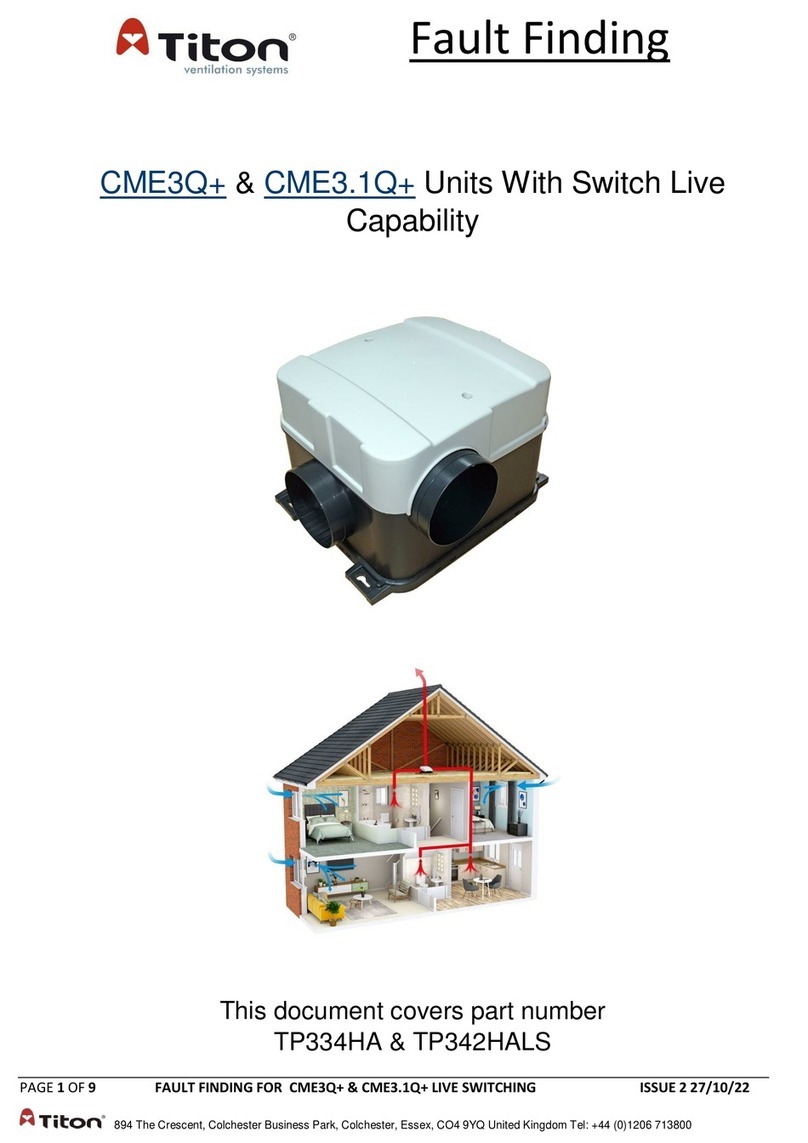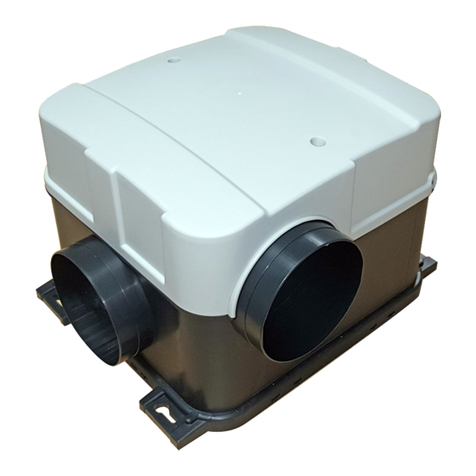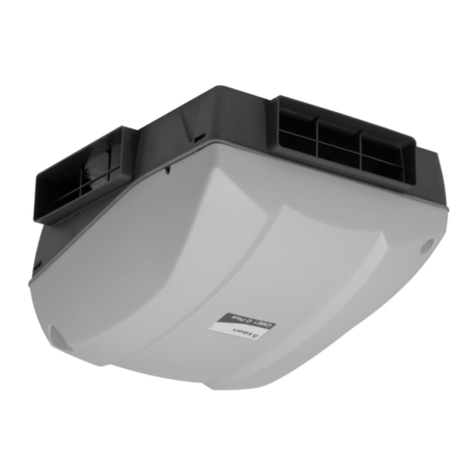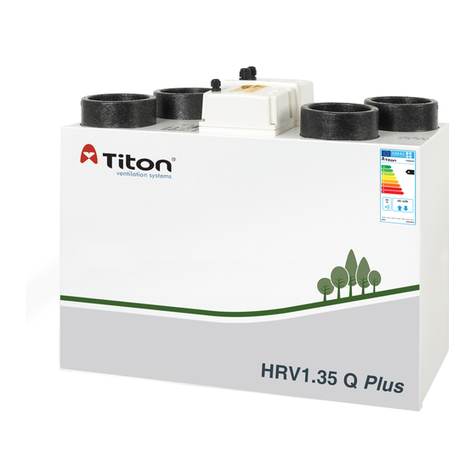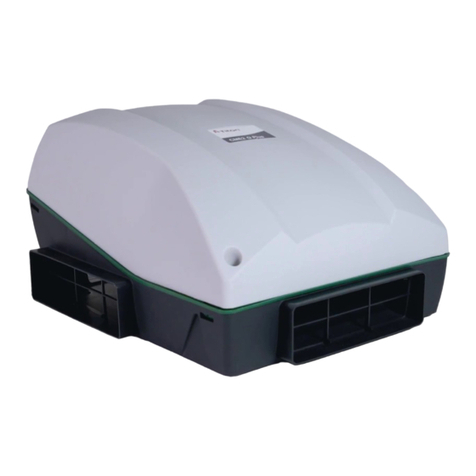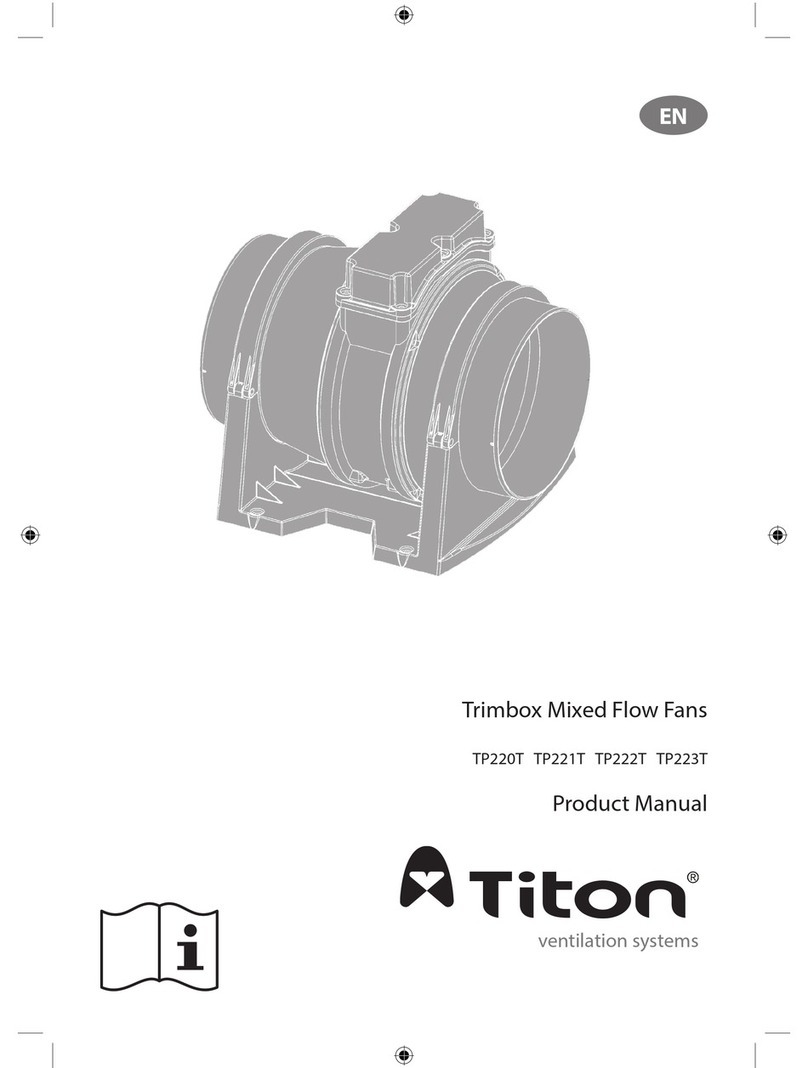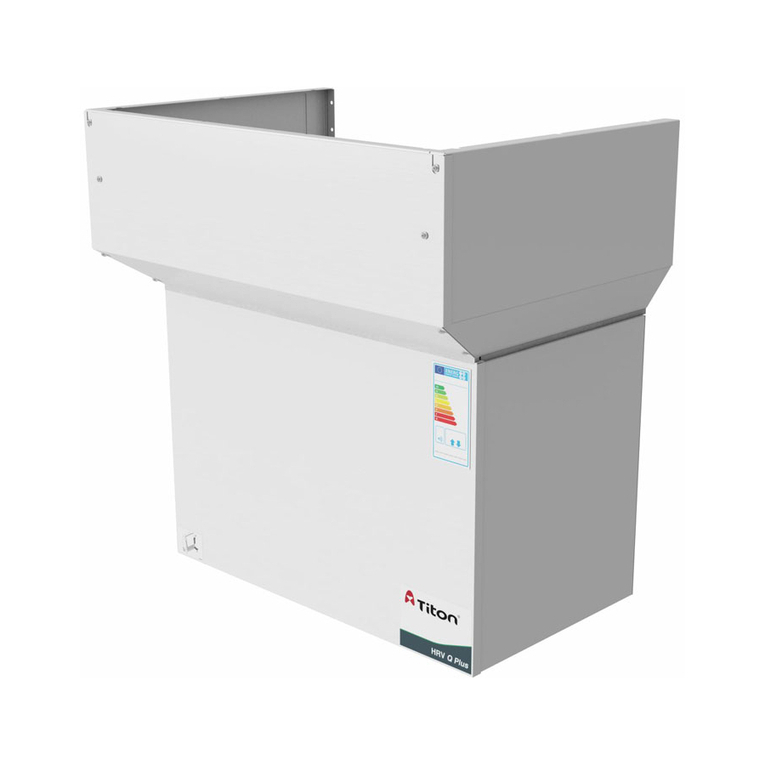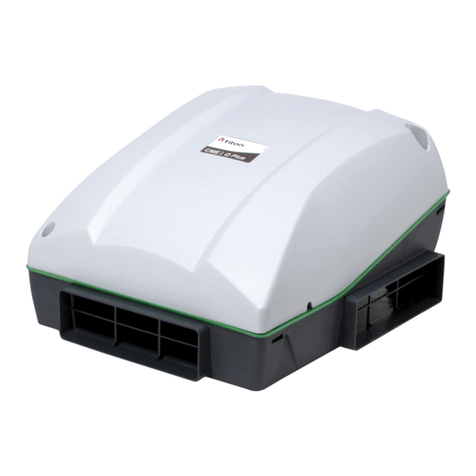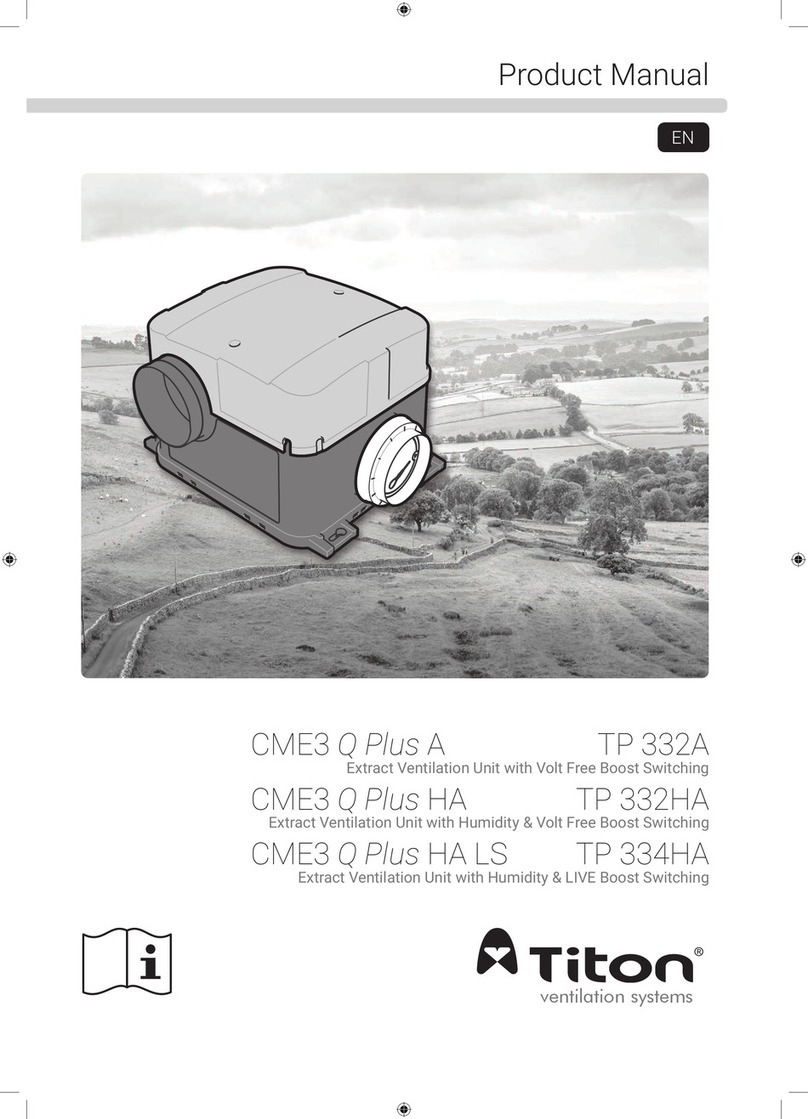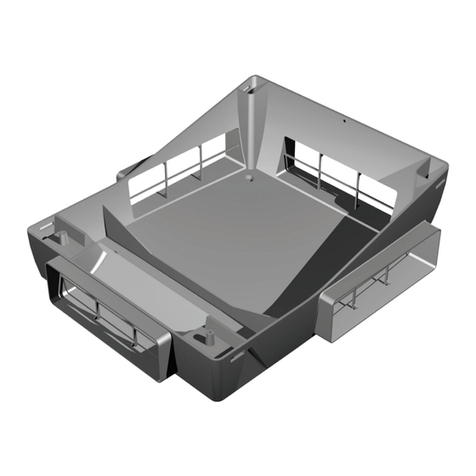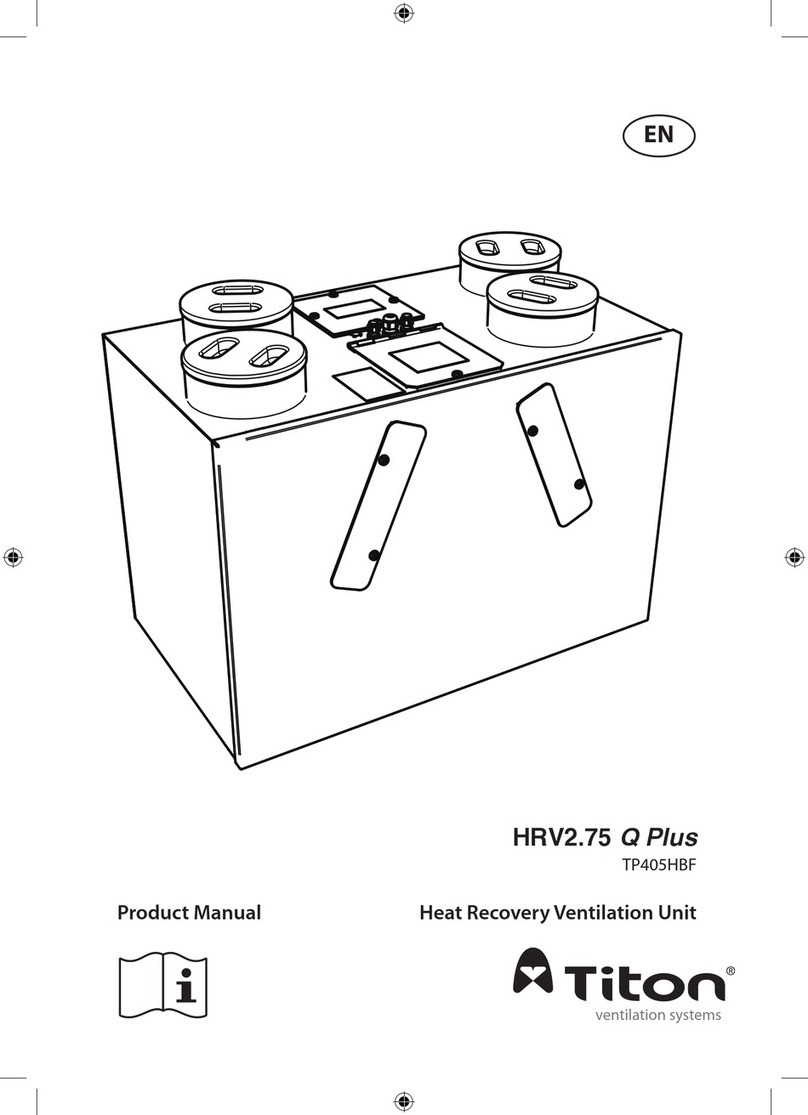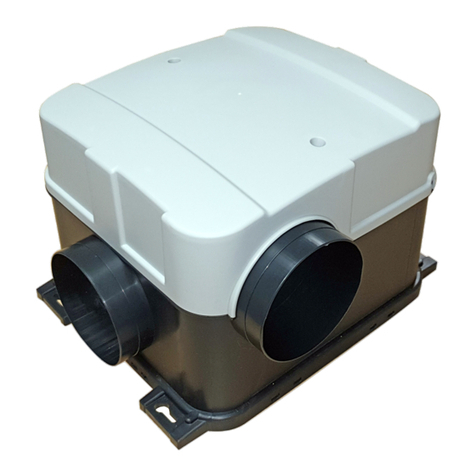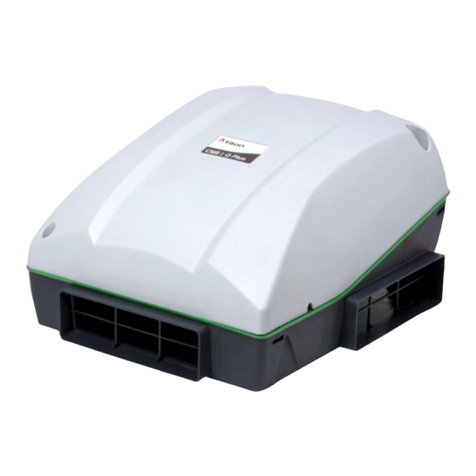WARNING: The unit uses a 230V ~ supply and
contains rotating mechanical parts. ISOLATE
the unit from mains power supply and allow
sucient time for all moving parts to stop before
undergoing any Servicing or Maintenance.
Enclosed type
1. ISOLATE the unit from mains power supply and
allow sucient time for all moving parts to stop.
2. Loosen the two corner screws located on the
bottom front of the unit.
3. Completely remove the centre screw.
4. Completely remove the Front Cover by pulling it
away from the unit at the bottom and lifting.
5. Slide out Filter Frames tted either side of heat
exchanger. Some units will have handed lters, so
ensure the left and right hand lters are replaced
or re-inserted like for like.
6. Clean by carefully remove any dust from face of
heat exchanger, interior of the unit and the Bypass
(if tted) using a vacuum cleaner or alternatively
replace with new lters. Do not use water or any
other uids.
7. Cover replacement is the reverse of the above
steps. Ensure it is securely located at the top before
tightening screws.
Filter door type
1. Unscrew and remove lter covers on front of unit.
2. Slide out Filter Frames tted either side of heat
exchanger. Some units will have handed lters, so
ensure the left and right hand lters are replaced
or re-inserted like for like.
3. Clean by carefully remove any dust from face of
heat exchanger, interior of the unit and the Bypass
(if tted) using a vacuum cleaner or alternatively
replace with new lters. Do not use water or any
other uids.
4. Replace lter covers ensuring they t tightly
against the front panel.
Filters should be replaced after a maximum of 3
cleaning cycles.
A Product Manual with full maintenance instructions is
supplied with the unit and should be located on the unit
or left with the householder or landlord.
If your manual is missing and you are responsible for
maintenance, please go to www.titon.co.uk/mvhr for a
copy.
It must be used as a service record.
HRV User Guide - MVHR
Your home has is tted with a balanced ventilation
system with heat recovery. At the heart of this system is
a Titon HRV QPlus Heat Recovery Unit. This contributes
to improved indoor air quality and increased comfort
levels. For the ventilation unit to function eciently it
needs to be maintained and used correctly.
Ventilation is Vital
Indoor air quality deteriorates without controlled
ventilation, and this is intensied now modern homes
are built more airtight. Chemicals, gases and moisture
produced by everyday products and activities may lead
to the build up of pollutants which could be harmful
to the health of the occupants and may damage the
building fabric.
Once homes are occupied it is the responsibility of the
home owner/ landlord to maintain the system following
the guidance provided.
How the System Works
The ventilation system extracts stale polluted air from
rooms where most moisture is generated e.g. kitchens
and bathrooms, and provides fresh air taken from
outside which is by the HRV Q Plus then delivered
to other rooms. This creates a ow of fresh, clean air
throughout the house.
Heat is reclaimed from the extracted air and used to
preheat incoming fresh air by a“heat exchanger” which
is built into the central ventilation unit.
The ventilation system functions continuously
via hidden ducts without wasting heat or energy
unnecessarily. The air travels through terminals built into
the ceiling which are connected by hidden ducts to the
unit. Do not disturb or adjust the ceiling terminals, they
have been set to give the correct amount of ventilation
for the property.
The central unit is usually installed in a roof space
or cupboard, although most of the system is hidden
from view as it has been designed into the house
construction. The system has the facility to boost the
ventilation rate at times when more moisture is being
generated, such as when bathing or cooking.
During cold weather the frost protection program
will automatically vary the ventilation to ensure
that there is no build up of ice in the unit. During
operation, you may notice small changes in airow
or noise levels. This is quite normal as the unit is
designed to operate in this way.
How to Use the System
The system runs by itself for normal ventilation rates.
If a boost switch has
been installed, it should
be used to increase the
extract ventilation rate
at times when moisture
or pollutant levels are
considered excessive.
Sensors may be tted in
the dwelling which detect high levels of moisture or
pollutants and boost the system automatically.
Your system may have additional switching options and
settings, please ask your housebuilder for further details
if you are unsure.
Maintenance
All ventilation units require periodic maintenance.
Routine maintenance, apart from lter changes,
must only be carried out by a suitably qualied and
competent person. The lters should be changed
regularly, the frequency of cleaning will vary depending
on the environmental conditions and occupancy levels
in the property.
Filters can be cleaned by carefully using a vacuum
cleaner. Filters should be replaced at least annually, or
more regularly dependent on environmental conditions.
Replacement Filters are available from TitonDirect.co.uk
or via contact numbers shown. You will need to know
the unit part number, which can be found on the serial
number label xed to the top and front of the unit.
HRV User Guide - MVHR
Tel: +44 (0) 1206 713800 Email: ventsales@titon.co.uk Web: www.titon.com
Extract
Terminals
e.g. kitchen,
bathrooms &
toilets
Supply Terminals
e.g. living room, dining room
& bedrooms
HRV Q Plus
Inlet
Exhaust
Typical Ceiling Terminal
